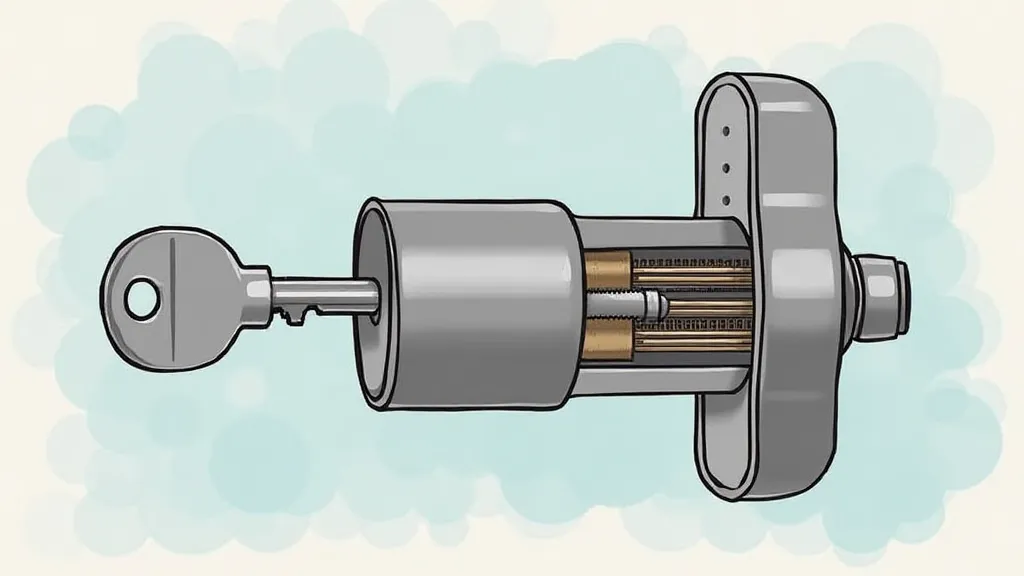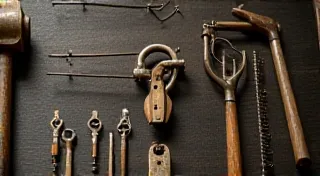Understanding Lock Types: A Beginner's Guide to Pin Tumbler Locks
Welcome to the fascinating world of lock picking! This guide is designed for absolute beginners eager to understand the most prevalent type of lock: the pin tumbler lock. We're focusing on the understanding of these locks—no tools required for this part. We’re laying the foundation; later guides will explore the tools and techniques themselves. As always, remember we're exploring these concepts for educational and recreational purposes with a firm commitment to ethical and legal practices. Never attempt to pick a lock you don’t have explicit permission to access.
What is a Pin Tumbler Lock?
Pin tumbler locks are by far the most common type you'll encounter on doors, padlocks, and countless other applications. Their name comes from their internal mechanism: they rely on a series of pins that must be aligned correctly to allow the lock to open. Think of it like a puzzle where you need to move several pieces into the right spot simultaneously.

Inside the Lock: Key Terminology
Let's break down the key parts and terminology. Understanding these terms is crucial for grasping how pin tumbler locks function:
- Cylinder (or Plug): This is the rotating part of the lock that turns when the key is inserted.
- Housing (or Shell): This is the stationary part of the lock that surrounds the cylinder.
- Pins: These are the core components. Each pin is actually comprised of two parts: a top pin and a bottom pin, separated by a gap.
- Shear Line: This is the critical boundary between the cylinder and the housing. When the pins are correctly aligned, the cylinder can rotate past the shear line, unlocking the lock.
- Pin Stacks: Each pin stack consists of a top pin, a bottom pin, and a spring that pushes the bottom pin upwards. The distance between the top and bottom pins determines the lock's resistance.
- Keyway: The slot where the key is inserted. Its shape and dimensions are unique to each lock.
How it Works: The Principle of Alignment
When the correct key is inserted, its cuts correspond to the spacing between the top and bottom pins. Each key cut pushes the top pin to the precise height, aligning all the pins so that the gap between the top and bottom pins – the shear line – allows the cylinder to rotate freely. If even a single pin stack isn't correctly aligned, the cylinder can't rotate and the lock remains locked.

Variations in Pin Tumbler Locks
While the basic principle remains the same, pin tumbler locks come in several variations:
- Standard Pin Tumbler (SPT): The most common type, often found on residential doors.
- Security Pin Tumbler (SPT): Incorporates features like spool pins or mushroom pins to increase picking difficulty. These are often found on more secure applications.
- High-Security Pin Tumbler (HS-SPT): These locks often have unique keyways and complex pin configurations to deter picking.
Don’t be overwhelmed by the variations! The fundamentals remain the same – understanding how the pins interact with the cylinder and the shear line. Recognizing the type of lock you are facing is a crucial first step.
Ethical Considerations
This guide is for educational purposes only. Attempting to pick locks without proper authorization is illegal and unethical. Understanding how locks work is a fascinating intellectual exercise, but responsible use of this knowledge is paramount. Respect property rights and always obtain permission before attempting to manipulate any locking mechanism. We are committed to promoting responsible and legal exploration of lock picking.
Next Steps
Now that you have a basic understanding of pin tumbler locks, you've laid a strong foundation. Our next article will explore the tools used in lock picking. Remember to always prioritize ethical and legal practices in your exploration of this interesting and complex field.






